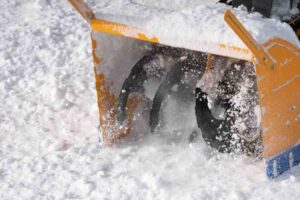Prevent Injuries with Smart Snow and Ice Management
Winter brings not only picturesque snow-covered landscapes but also serious challenges for property owners. Icy pathways, slippery parking lots, and heavy snow accumulation can create dangerous situations that increase the risk of injuries. Ensuring safety through efficient snow and ice management requires foresight, the right tools, and consistent action. A proactive approach can minimize hazards and prevent accidents during the colder months.
Begin with a Thorough Assessment
Taking stock of potential risk areas around your property is a crucial first step. Walkways, driveways, staircases, and parking lots often become treacherous in winter conditions. Additionally, consider areas where water tends to pool or drain slowly, as these spots are likely to freeze when temperatures drop. Entrances and exits with high foot traffic demand extra attention, as do emergency access points such as fire hydrants and escape routes.
Evaluating your property’s unique needs helps tailor a plan that addresses specific vulnerabilities. This assessment should be revisited each year since changes to the property or weather patterns may alter potential problem areas. Mapping out these zones in advance saves time when action is required.
Create a Comprehensive Winter Maintenance Plan
A structured plan ensures every aspect of snow and ice management is covered. Assign responsibilities to team members or contractors, outlining who handles snow removal, de-icing, and inspections. Establishing clear timelines for these tasks ensures nothing falls through the cracks.
Integrate weather monitoring into your plan. Staying informed about upcoming storms and freezing conditions allows for timely preparations. Consider subscribing to reliable weather alert systems that provide real-time updates, enabling your team to respond promptly.
Stock Up on Essential Supplies
Preparation involves more than just having a shovel on hand. Investing in high-quality snow removal tools, de-icing products, and protective equipment ensures your team can work efficiently and safely. Options like snow blowers or plows may be necessary for larger properties.
When choosing de-icing materials, consider their effectiveness at different temperatures. Products like rock salt work well in milder conditions but lose efficiency in extreme cold. Alternatives such as calcium chloride or magnesium chloride perform better in frigid temperatures and are less damaging to concrete and vegetation.
Storage is another factor to address. Keeping supplies in a secure, easily accessible location ensures quick deployment during snow events. Regularly checking inventory levels throughout the season prevents shortages during critical times.
Act Proactively with Anti-Icing Measures
Preventing ice from forming in the first place reduces the effort required later. Applying anti-icing treatments before a storm begins is an effective way to create safer surfaces. Liquid brines, for example, can be sprayed onto walkways and parking lots to form a protective layer that inhibits ice from bonding to the surface.
Timing is critical for anti-icing efforts. Ideally, treatments should be applied a few hours before precipitation starts. This proactive step can significantly reduce the amount of labor and materials required to address icy conditions after the fact.
Streamline Snow Removal Efforts
Clearing snow quickly and effectively is essential for maintaining safe conditions. Designating a prioritized route ensures critical areas like entrances, emergency exits, and main walkways are cleared first. Having a clear strategy in place minimizes confusion during snow removal operations.
For small areas, shoveling is often sufficient. Opt for ergonomic shovels designed to reduce strain and improve efficiency. Larger properties may benefit from mechanized options like snow blowers or plows, which can handle significant accumulation more quickly.

Avoid piling snow in places where it could obstruct visibility, block access, or melt and refreeze into ice. Designate specific zones for snow storage that won’t interfere with regular activities or create additional hazards.
Optimize the Use of De-Icing Products
De-icing materials play a vital role in reducing slippery conditions. Choosing the right product for your property depends on factors such as temperature, surface type, and environmental considerations. Some materials, like sand, provide traction without melting ice, while others actively break down ice layers.
Applying these materials evenly and in appropriate quantities is key to their effectiveness. Overusing de-icers can damage surfaces and harm nearby plants, while insufficient coverage leaves risks unaddressed. Spreaders ensure even application, especially in larger areas.
Regular monitoring and reapplication during storms help maintain consistent safety. Ice can form quickly, particularly during fluctuating temperatures or freezing rain, making ongoing attention essential.
Leverage Modern Technology
Advancements in snow and ice management technology save time and effort. Heated mats and walkways prevent ice buildup in high-traffic areas. These systems are especially useful for staircases, ramps, and entryways where manual de-icing is labor-intensive.
Snow-melting systems installed beneath driveways or sidewalks provide automated surface clearing. Although these solutions require upfront investment, they reduce long-term labor costs and improve safety.
IoT-enabled sensors offer real-time data on surface temperatures and snowfall rates, allowing precise, efficient snow and ice management.
Implement Safety Measures for Personnel
Managing winter conditions involves physical labor, posing its own risks. Providing workers with appropriate gear reduces injury potential. Insulated boots with non-slip soles improve stability, and gloves designed for grip and warmth help prevent frostbite while handling tools.
Training workers on safe techniques is just as important. Topics should include proper lifting, effective equipment use, and hazard identification. Encouraging teamwork prevents fatigue and ensures tasks are completed safely.
Protect Visitors with Clear Communication
Accidents involving guests or clients pose significant liabilities. Proactively informing visitors of hazards reduces these risks. Use warning signs near icy patches and areas under maintenance. Bold colors and durable materials ensure visibility, while temporary barriers like cones or ropes restrict access to unsafe zones.
Updating signage as conditions change demonstrates diligence and fosters a secure environment.
Address Long-Term Concerns
Winter safety doesn’t end with immediate snow and ice removal. Addressing drainage issues, such as clogged gutters or poorly graded surfaces, reduces water pooling and freezing risks. These improvements also enhance property functionality year-round.
Incorporating durable, slip-resistant materials during renovations boosts safety. Textured concrete or rubberized coatings offer better traction in wet or icy conditions.
Evaluate and Refine Your Approach
At season’s end, review your snow and ice management strategy. Collect feedback from staff and visitors to identify improvement opportunities. Tracking any incidents provides valuable insights into plan weaknesses.
Implementing these lessons strengthens your approach for future winters, whether by upgrading equipment, enhancing processes, or expanding training.
Why Choose National Facility Contractors?
When winter hazards threaten safety, National Facility Contractors (NFC) is your trusted partner for professional snow and ice management. NFC combines cutting-edge equipment, eco-friendly de-icing solutions, and proactive planning to keep your property clear and safe. Our teams prioritize critical areas, deploy real-time weather monitoring for precision service, and offer 24/7 availability to prevent disruptions. With tailored service plans and a commitment to safety, NFC provides comprehensive solutions to protect people, property, and your business’s reputation all winter long.
Conclusion
Snow and ice management is a critical responsibility during winter months. By assessing risks, planning ahead, and using the right tools and techniques, property owners can minimize injuries and maintain safe conditions. Each measure, from proactive anti-icing treatments to leveraging technology, contributes to a safer environment. Trust National Facility Contractors to deliver expert snow and ice management solutions that prioritize safety and efficiency. Contact us today to create a customized winter safety plan that keeps your operations running smoothly.






